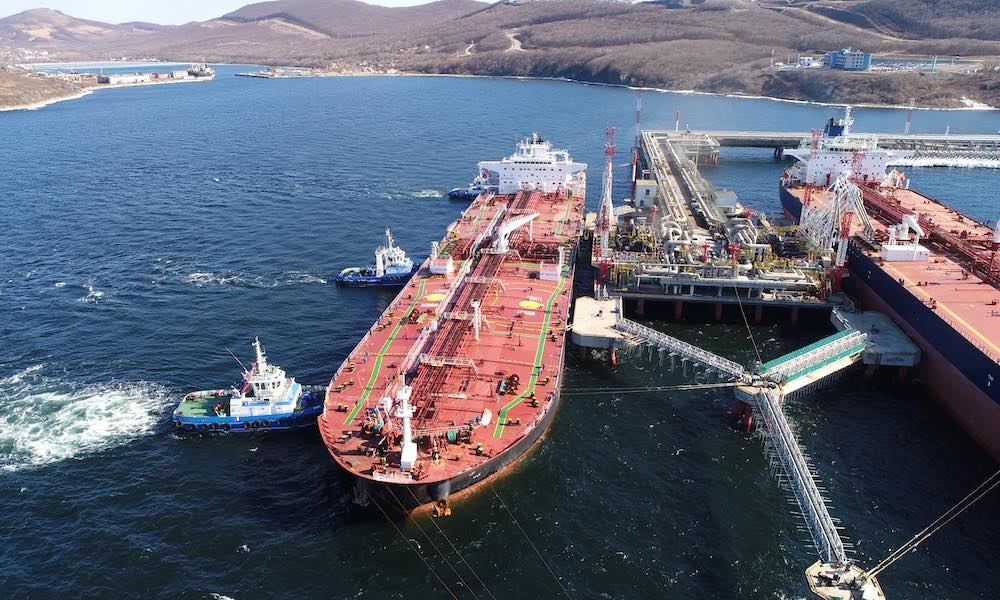Russia’s Oil Exports Plummet Amid Sanctions

Russia’s crude oil exports are experiencing their most significant disruption since the onset of the war, driven by new U.S. sanctions that are reshaping global oil markets. According to Bloomberg data, the four-week average of shipments fell to 3.58 million barrels per day by November 2, marking a decline of nearly 200,000 barrels per day from late October. This drop represents the steepest decline since January, with Moscow’s oil revenues hitting their lowest point since August as major refiners in China, India, and Turkey halt purchases of sanctioned barrels ahead of a compliance deadline on November 21.
Impact on Global Oil Flows
Analysis from Braemar and Vortexa indicates that the repercussions of these sanctions are already evident on the high seas. Russian crude oil in transit has surged to a 2.5-year high of 115 million barrels, with approximately 68 million barrels still en route to India. However, many Indian refiners are reducing future imports, creating a mismatch between Russian exports and Indian demand, which stands at about 450,000 barrels per day. This situation raises concerns about the growing volume of unsold crude that may struggle to find buyers.
While some state-owned Indian refiners continue to accept limited non-sanctioned shipments, private refiners have significantly cut back, with a reported 60% decrease in shipments to these entities since the sanctions were announced. Much of the unallocated crude is expected to be redirected to China’s Shandong teapot refiners, although their capacity to absorb these additional volumes remains uncertain. Additionally, Chinese state-owned refiners have also reduced their intake of Russian crude.
The pricing landscape has shifted as well, with the ESPO blend from Kozmino, which previously commanded a premium over Brent crude, now trading at a $0.50 per barrel discount. Some buyers have even canceled their cargo orders, reflecting the changing dynamics in the market.
Challenges Ahead for Russian Exports
The behavior of tankers has also adapted to the new circumstances. Braemar reports an 11% increase in ballast speeds for unsanctioned vessels returning to Russia, as ship owners rush to complete final loadings before the sanctions take full effect. This tightening of available shipping capacity, combined with increasing discharge delays, could soon limit Russia’s ability to maintain its export volumes.
Furthermore, Sentosa Shipbrokers have noted a rise in Russian crude being stored on floating vessels, as refiners impacted by drone strikes and sanctions struggle to place their barrels. Recent Ukrainian attacks on key infrastructure, including Lukoil’s Nizhny Novgorod refinery and facilities in Tuapse and Saratov, have further complicated the supply situation. In response, Russia has imposed a temporary export ban on sulfur until at least the end of the year.
Looking ahead, analysts from Swedish bank SEB predict that India and China may shift their sourcing strategies toward oil from the Atlantic Basin and Middle East, which could open up longer shipping routes and increase demand for compliant tankers. VLCC rates from the Middle East have already surged over 50% since the announcement of U.S. sanctions.
As Russian crude continues to accumulate at sea and traditional buyers retreat, experts warn that Moscow may soon face a “triple squeeze”: a reduction in available ships, fewer markets willing to accept its oil, and a decline in production capacity due to ongoing drone attacks. With approximately 20% of Russia’s national refinery capacity compromised in recent months, authorities are now urgently constructing protective metal cages around oil facilities to safeguard them from future assaults.
